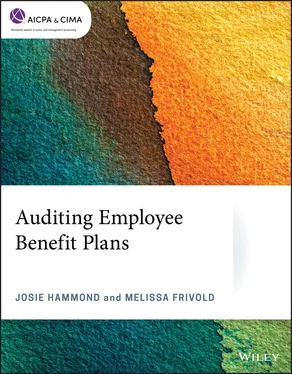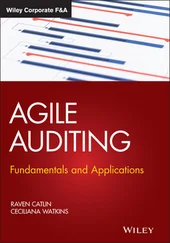2220.18–.28, which are intended to assist reporting entities in applying the provisions of FASB ASC 820 to estimate the fair value of their investments in certain entities that calculate NAV.
2220.18, “Applicability of Practical Expedient,” to reflect conforming changes necessary due to the issuance of FASB ASU No. 2015-10, Technical Corrections and Improvements, concerning the revised definition of readily determinable fair value. 2220.28, “Definition of Readily Determinable Fair Value and Its Interaction With the NAV Practical Expedient,” to provide nonauthoritative guidance concerning the definition of RDFV and its interaction with the NAV practical expedient.
Note: On March 1, 2017, FASB discussed the definition of readily determinable fair value and stated that “…users of the financial statements would not be misled when provided either set of disclosures. The Board would encourage entities to provide the disclosure that are consistent with the conclusions previously reached on the measurement of the investment.” Further information on this meeting can be found on the FASB website.
FASB ASC 825, financial instruments
FASB ASC 825 creates a fair value option under which an organization may irrevocably elect fair value as the initial and subsequent measure for many financial instruments and certain other items that are not already required to be reported at fair value, with changes in fair value recognized in the statement of activities as those changes occur. An election is made on an instrument-by-instrument basis (with certain exceptions), generally when an instrument is initially recognized in the financial statements. Additional disclosures are required for entities that make the fair value election.
FASB ASC 825 also requires the following financial instruments general disclosures:
In the body of the financials or in the accompanying notes, the fair value of financial instruments for which it is practicable to estimate fair value
The method(s) and significant assumptions used to estimate the fair value of financial instruments consistent with the requirements of “Pending Content” in FASB ASC 820-10-50-2(bbb), except that a reporting entity is not required to provide the quantitative disclosures about significant unobservable inputs used in fair value measurements of investments held by an employee benefit plan in the plan sponsor’s own private company stock categorized within Level 3 of the fair value hierarchy required by that paragraph
A description of the changes in the method(s) and significant assumptions used to estimate the fair value of financial instruments, if any, during the period
The level of the fair value hierarchy within which the fair value measurements are categorized in their entirety
For financial instruments recognized at fair value, the disclosure requirements of FASB ASC 820 also apply.
The requirement to disclose the hierarchy level does not apply to nonpublic entities for items that are not measured at fair value in the statement of financial position but for which fair value is disclosed.
These disclosures are required for all entities but are optional for a plan that meets all of the following criteria: the plan is nonpublic, total assets are less than $100 million on the financial statement date, and no instrument is accounted for as a derivative under FASB ASC 815, Derivatives and Hedging .
Note:As discussed in the Recent Developments section of this chapter, FASB ASC 825 was also amended.
Help desk.Participant loans, which are reported at cost, would have fallen under this requirement to disclose fair value and consequently the hierarchy level because they are financial instruments; however, they have been specifically scoped out of these FASB ASC 825 disclosures.
See FASB ASC 825 for further guidance, including presentation and disclosure requirements.
1 FASB ASC 820 establishes a fair value hierarchy and gives the highest priority toUnobservable inputs.Valuation techniques.Quoted market prices.Observable inputs.
An employee benefit plan’s financial statements are required to contain certain information about the plan, the plan’s activity and other events that affect net assets or benefits, as well as other factors necessary to understand the information provided. Financial statements intended to be presented in accordance with GAAP are to be prepared on the accrual basis and should include a statement of net assets available for benefits at the end of the plan year, as well as a statement of changes in net assets available for benefits for the year ended. However, ERISA requires comparative statements of net assets available for benefits to be presented. In addition, ERISA requires certain supplemental schedules.
ERISA also requires the plan’s financial statements to include a note explaining differences, if any, between amounts reported in the financial statements and amounts reported in Form 5500. ERISA allows the financial statements to be reported using cash, modified cash, or accrual basis of accounting.
For defined benefit pension plans, information regarding the actuarial present value of accumulated plan benefits and information regarding the effects of certain significant factors affecting the change in accumulated plan benefits are also required to be disclosed, in the financial statements or in the notes. Accumulated benefits represent future benefits attributable under the plan’s provisions based on service rendered through the measurement date. Plan amendments through the measurement date as well as automatic benefit increases should be used in determining accumulated benefits. The actuarial present value of accumulated benefits will be measured using assumptions such as rates of return, participants’ history of pay and service, and other factors.
Defined benefit health and welfare plans should also present information regarding the plan’s benefit obligations as of the year-end and information regarding the effects of certain significant factors affecting the change in obligations. The measurement date for benefit obligations should be as of a plan’s year-end; otherwise a rollforward would be required from the interim date. Information regarding benefit obligations does not apply to defined contribution plans since the plans’ obligations to provide benefits are limited to the amount accumulated in an individual participant’s account.
The financial statements should include the actuarial present value of postretirement benefits and each type of postretirement benefit should be separately disclosed. If a plan permits postemployment benefits (such as accumulated eligibility credits), an obligation for such benefits should be reflected in the financial statements and calculated using assumptions for mortality and probability of employee turnover. Claims payable and claims incurred but not reported should be included in the statement of benefit obligations for a self-funded plan, and excluded for an insured plan.
Allocated contracts should be excluded from the plan’s financial statements and from determining accumulated plan benefits; whereas, unallocated contracts should be included. Disclosure is required for differences between the value of investments reported in the financial statements and Form 5500 annual report.
GAAP requires significant accounting policies to be disclosed. In addition, FASB ASC 275, Risks and Uncertainties , requires disclosures regarding certain risks and uncertainties faced by the plan, to assist financial statement users in understanding the risks that are particularly important to the plan that could significantly affect the amounts reported or disclosed in the financial statements in the near term. The plan is required to disclose information in the following four areas:
Читать дальше











